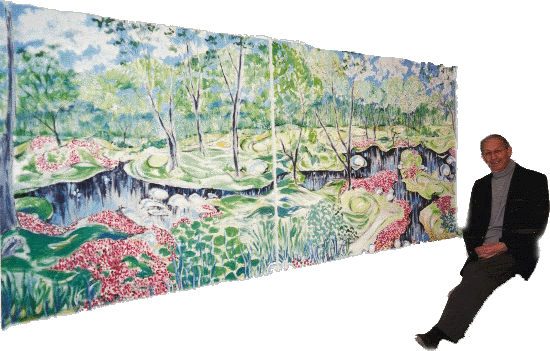|
Inspired and amazed by the beautiful landscape of Vancouver, Canada, Maurice Sunderland (MS) an architect from Belfast, Northern Ireland first developed his passion for painting.
His apartment on West Vancouver was an ideal location for settings of oceans and mountains. Initial attempts at art were impressionistic blob massing of the residential intertwined with hillsides, very colorful and leaving a lot to the imagination.
When he later moved to Calgary to open a joint Architectural/Engineering practice, MS developed his passion further by taking his painting to the next level of scenic art using a dot dash approach for the oils on canvas board. His apartment, which overlooked a scenic valley to the mountains, with a golf course, gorge, and river valley, was once again his source of inspiration.
Scenic art has developed in scale from a basic module of 4'x4' up to modular clusters 6'x12', and give the impression of being part of the scene, and not just a thumbnail sketch.
Background scenery also forms part of the range of impressionistic paintings.
Motion and action in artistic expression relates to everyday life, getting away from static and immobile actions of the human being, be it dance, exercise, the market place, etc.
Thus, the dance besides the actual steps and rhythm appear on a floor scope expressing the movements, and encouraging restlessness in presentation. Color has vitality and the solid massing of the subject takes on different dimensions including a major use of line drawing.
Drama of the floral scope appears thro' an enlarged examination of the world of plants and flowers, also a field to wander thro' and see it's sculptural design.
Portraits over the past era have allowed a deep examination of the being behind the individual. The results have been most satisfying for the artist, especially as the scale is slightly larger than real. A whole orange of portraits have resulted from detailed study to the whole individual.
|

